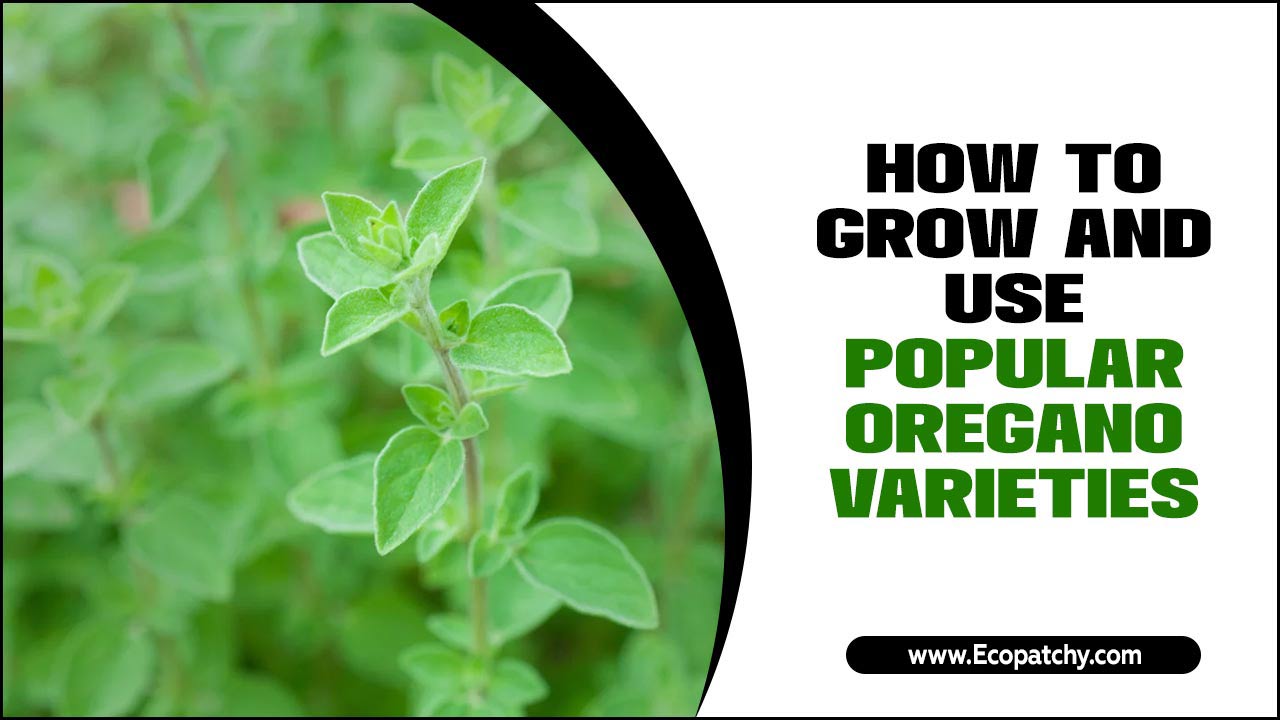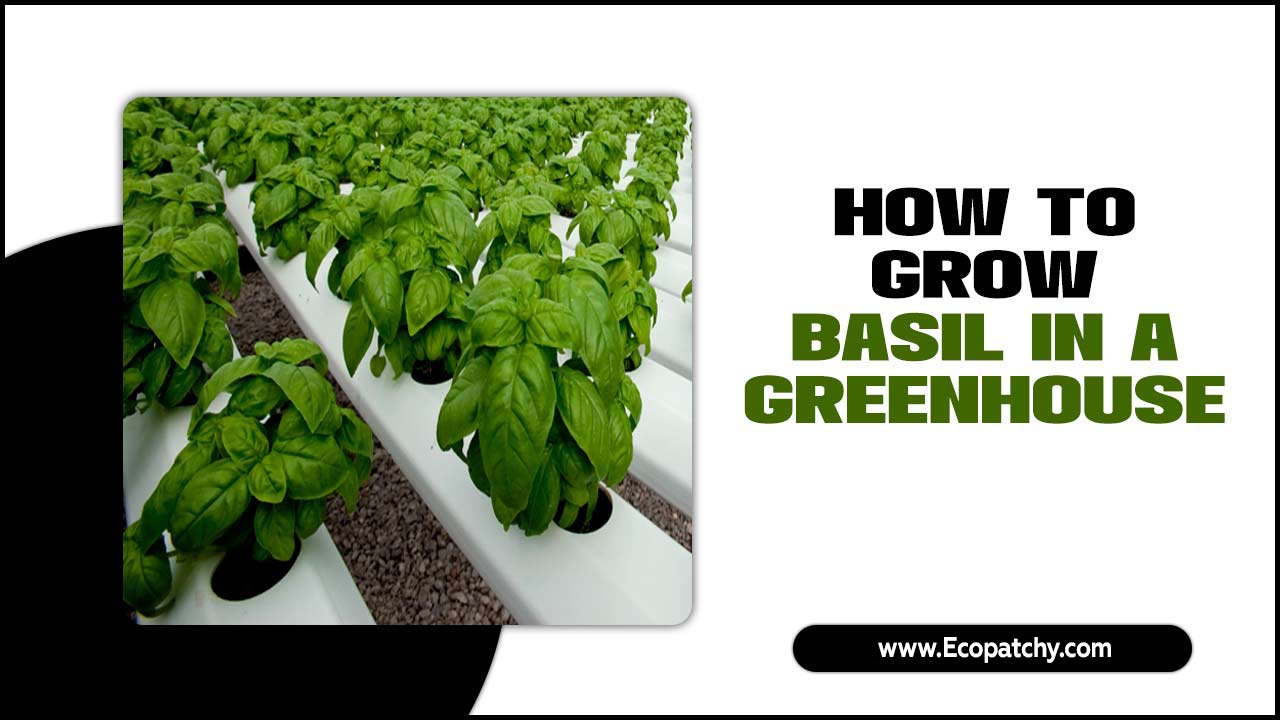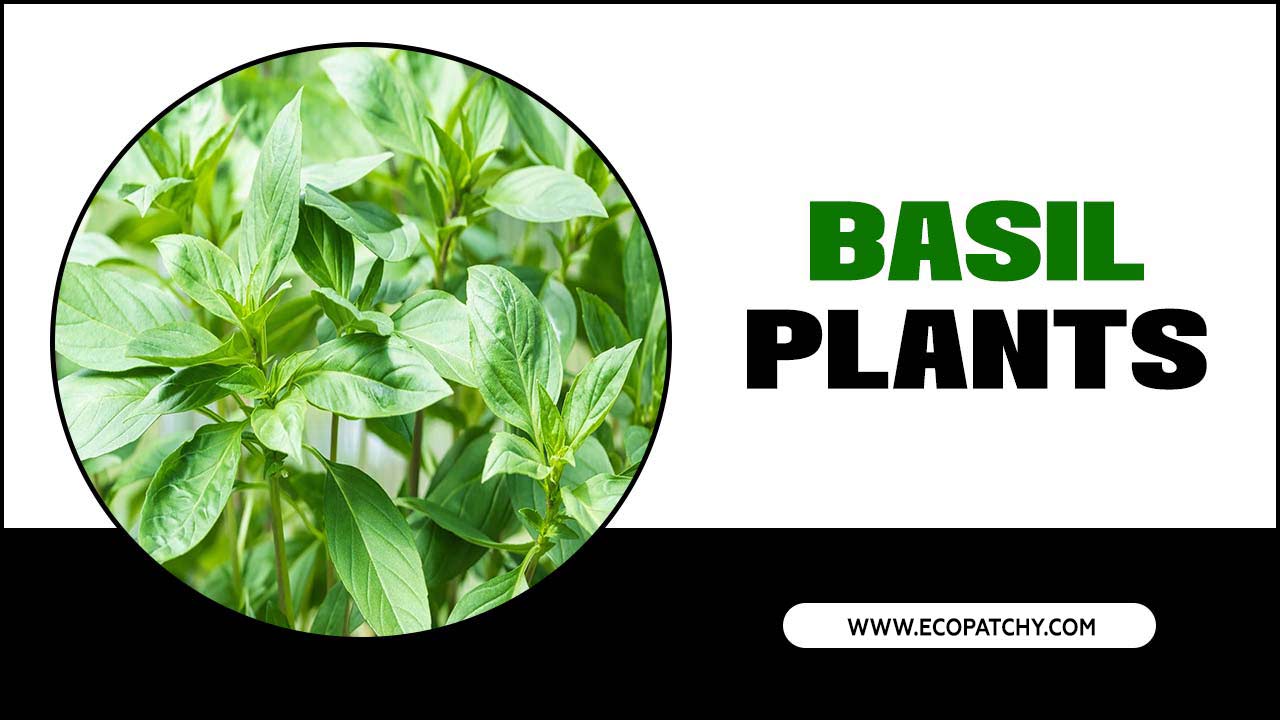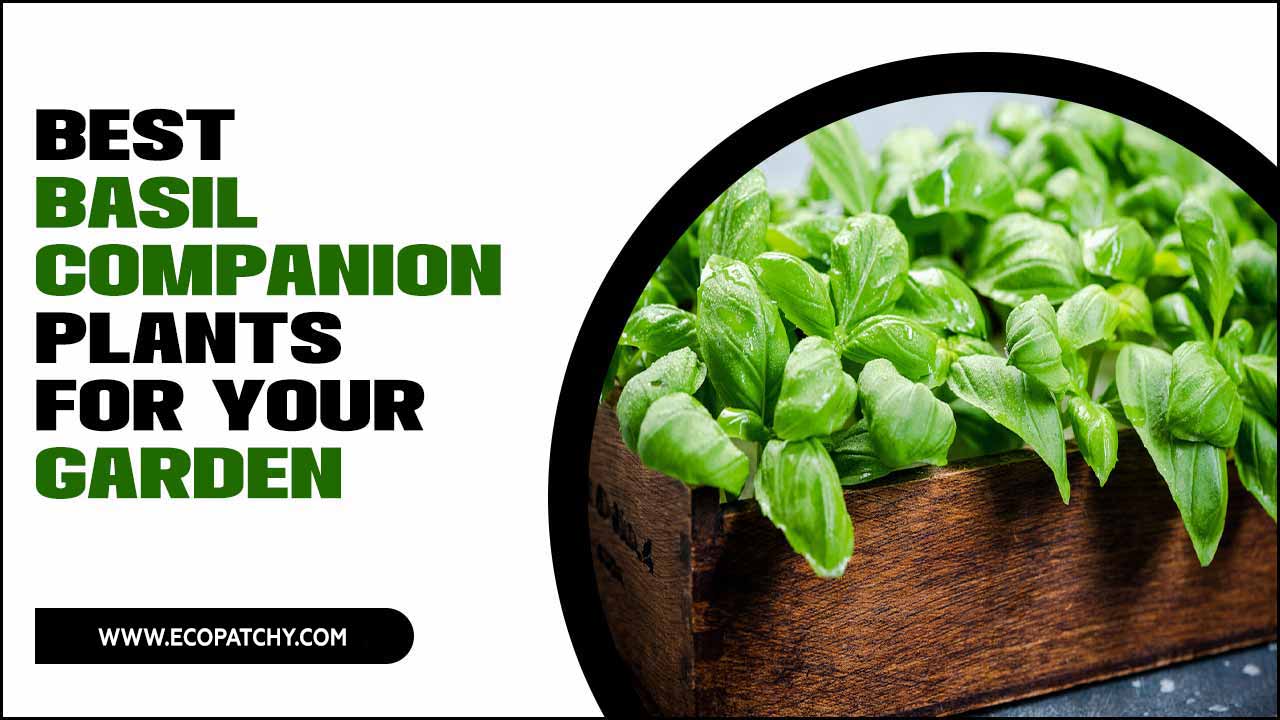Basil is one of the most loved herbs, and for good reason. It’s versatile, fragrant, and incredibly easy to grow. But did you know that there are different varieties of basil?
Each one has its unique flavor profile and culinary use. Here, we’ll dive into everything you need to know about how to grow and use different basil varieties. We’ll start with understanding their growing requirements, including how to start basil seeds or transplants.
Then we’ll explore five easy ways to grow and use different basil varieties, covering topics like caring for the plants, harvesting the leaves at the right time, and preserving them. Lastly, we’ll share some creative ways to use basil in cooking and cocktails so that you can make the most out of this amazing herb.

Understanding The Growing Requirements Of Basil
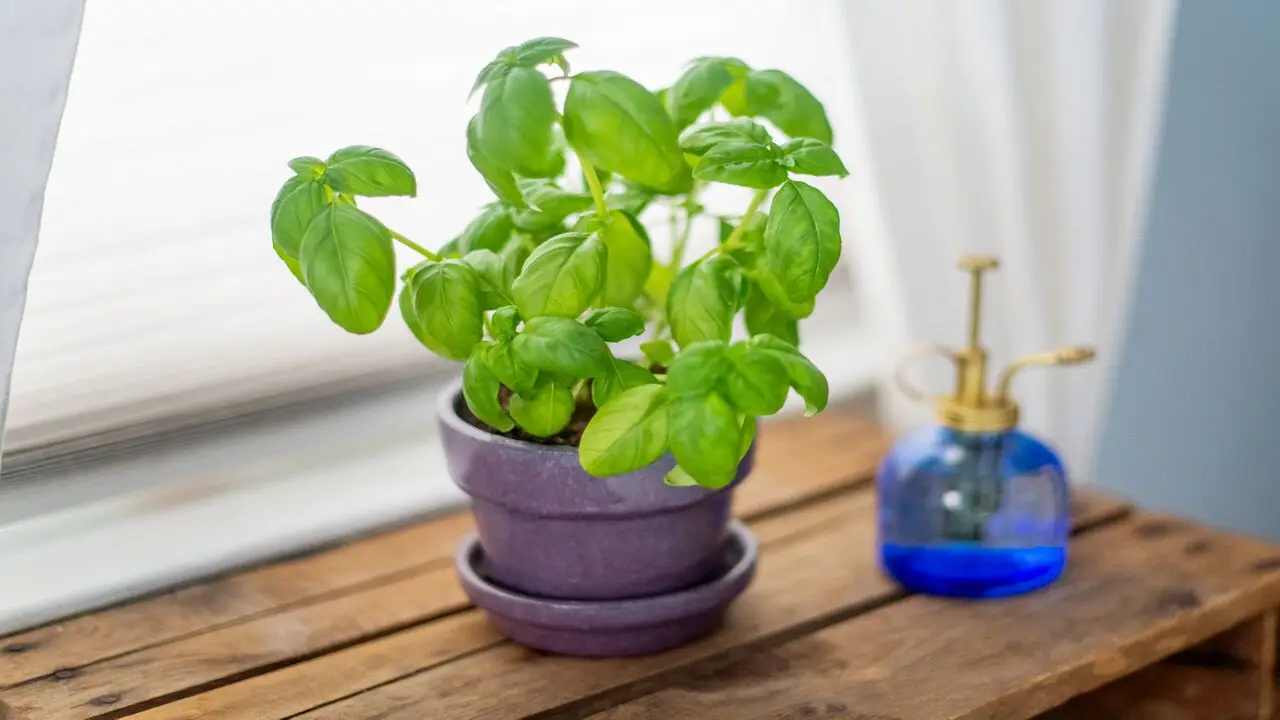
To successfully grow and cultivate different basil varieties, it is crucial to understand their specific growing requirements. Basil thrives in full sun, benefiting from at least 6-8 hours of direct sunlight daily. Well-drained soil is essential to prevent root rot, ensuring the plants’ overall health.
Regular watering is necessary to keep basil hydrated, but be careful not to overwater, as it can lead to root issues. Fertilizing every 2-3 weeks with a balanced organic fertilizer promotes healthy growth. Additionally, pruning basil encourages bushier growth while preventing premature flowering. By adhering to these growing requirements, you can enjoy a bountiful harvest of vibrant, fragrant basil leaves.
Starting Basil Seeds Or Transplants
To start growing basil, you have a few options. If you want a head start before the growing season, you can start basil seeds indoors about 6-8 weeks before the last frost date. This will give your basil plants a better chance to establish themselves before being transplanted outdoors.
Once the danger of frost has passed and the weather has warmed up, you can transplant the basil seedlings into your garden. Another option is to sow basil seeds directly in the garden once the soil has warmed up in the spring. Regardless of your chosen method, keeping the soil moist is important until the basil seeds germinate. Once the seedlings start to grow, thin them out to provide enough space for each plant to thrive.
5 Easy Ways How To Grow And Use Different Basil Varieties

Many individuals seek easy and practical ways to enhance their culinary experiences in today’s fast-paced world. One such way is by growing and utilizing different varieties of basil in their cooking endeavors. With its distinct aroma and flavor, Basil can elevate any dish to new heights. Here, we will explore five easy ways how to grow and use different basil varieties
1.Caring For Basil Plants: Watering, Fertilizing, And Pruning
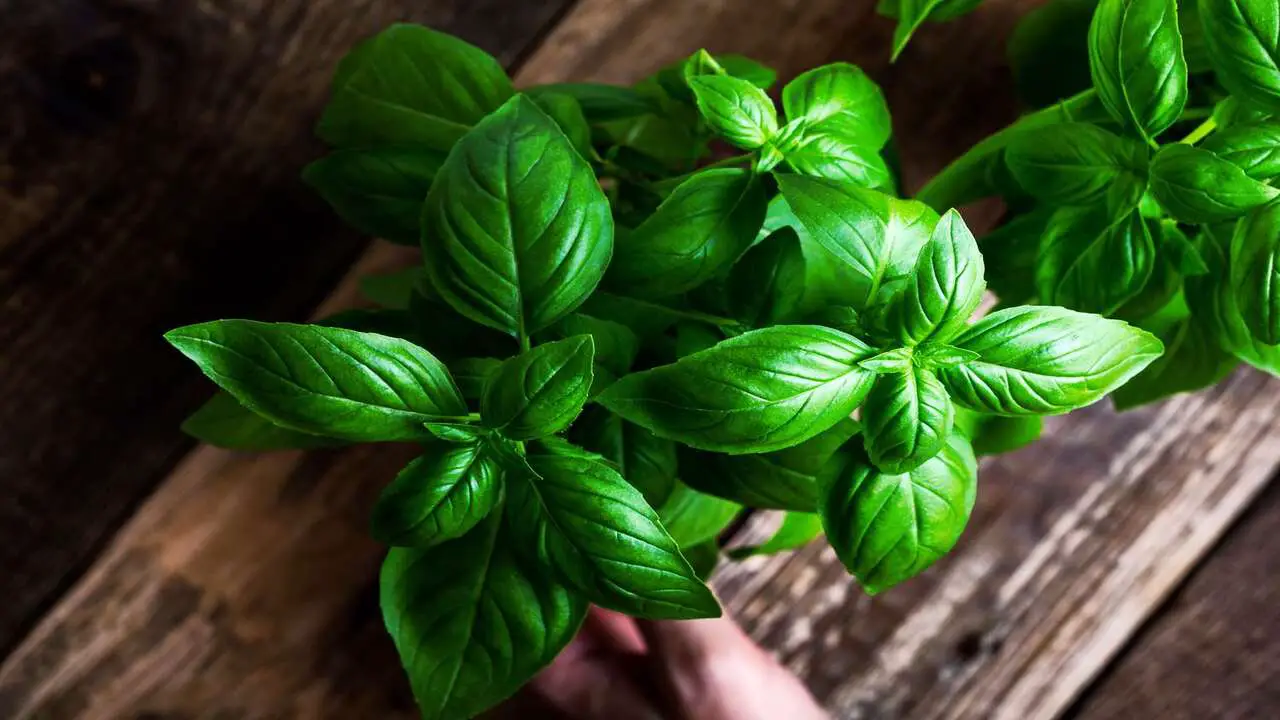
To ensure the health and vitality of your basil plants, it is essential to provide them with proper care. Firstly, consistently water your basil plants, ensuring the soil remains evenly moist. This will prevent the plants from drying out and promote healthy growth.
Additionally, use a balanced fertilizer to fertilize your basil plants every 2-3 weeks. This will provide them with the necessary nutrients for robust development. Regular pruning is also crucial for basil plants.
By trimming the plants regularly, you can encourage bushier growth and prevent them from flowering prematurely. If any flower buds appear, pinch them off to extend the plant’s lifespan. Finally, consider mulching around the basil plants to retain moisture and suppress weed growth. By following these care tips, you can enjoy a thriving basil garden.
2.Harvesting Basil Leaves At The Right Time
Start harvesting your basil leaves once the plant has reached a height of 6-8 inches. To ensure the highest essential oil content, harvesting basil leaves in the morning is best. When picking the leaves, start from the top and work your way down, leaving a few sets of leaves on each stem.
Regularly harvesting basil not only encourages new growth but also helps prevent flowering. It’s important to use the harvested basil leaves immediately or store them in the refrigerator. Following these steps, you can ensure you harvest your basil leaves at the right time for maximum flavor and fragrance.
3.Exploring Different Basil Varieties: Genovese, Thai, Lemon, Holy, And Purple Basil
With its classic reputation in Italian cuisine, Genovese basil adds an authentic touch to pasta dishes and pizzas. Thai basil offers a spicy kick to Thai and Vietnamese cuisine, while the citrusy aroma of lemon basil complements seafood and salads.
Holy basil, or tulsi, is cherished in Indian culture for its medicinal properties. With its purple stems and leaves, purple basil adds visual interest and a subtle hint of spice to various dishes. These different basil varieties provide diverse flavors and fragrances, allowing you to experiment and enhance your culinary creations with ease.
4.Culinary Uses Of Different Basil Varieties
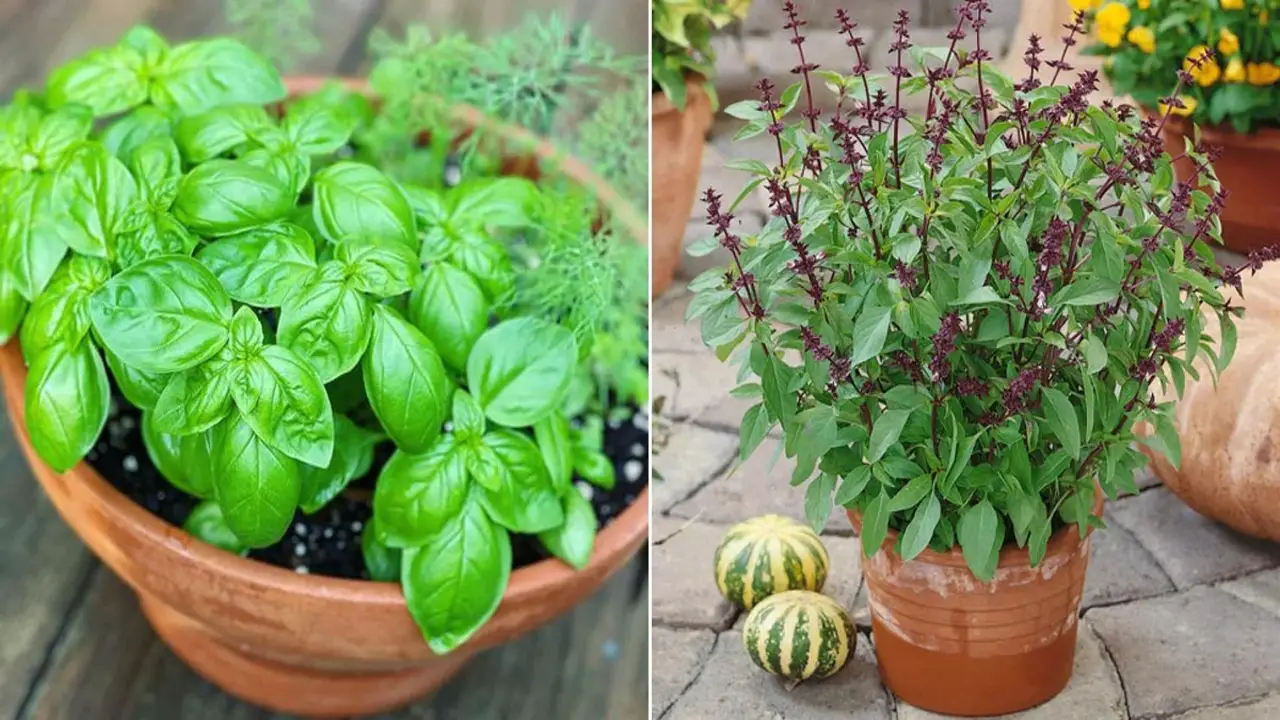
Genovese basil, a classic variety used in Italian cuisine, is perfect for making traditional pesto sauce. With its aromatic and slightly spicy flavor, Thai basil adds a delightful twist to stir-fries. With its citrusy fragrance, Lemon basil enhances the taste of fish, chicken, and fruit salads. Holy basil, known as tulsi, is found in teas, curries, and herbal remedies.
Purple basil adds a vibrant pop of color and lends its unique flavor to desserts, cocktails, and salads. With these different basil varieties, you can explore a world of culinary possibilities, each offering its distinct taste and aroma.
5.Preserving Basil: Drying, Freezing, And Making Basil-Infused Oils
Preserving basil and extending its shelf life is essential for enjoying its fresh flavor all year round. Drying basil is a simple process that involves hanging bunches upside down in a cool, well-ventilated area. This method allows the leaves to dry naturally while retaining their fragrance. Another option is freezing basil leaves in an airtight container or as pesto cubes. This preserves the vibrant green color and ensures easy access for future use in recipes.
Making basil-infused oil is a great choice for those who want to infuse basil’s aromatic essence into their dishes. Just steep fresh basil leaves in olive oil and strain out the leaves before using the flavorful oil.
Store dried basil in a sealed container in a dark, cool pantry to maintain its potency, while frozen basil can be used directly in recipes without thawing. By preserving basil through drying, freezing, and making basil-infused oils, you can enjoy the taste and fragrance of this versatile herb all year long.
Creative Ways To Use Basil In Cooking And Cocktails
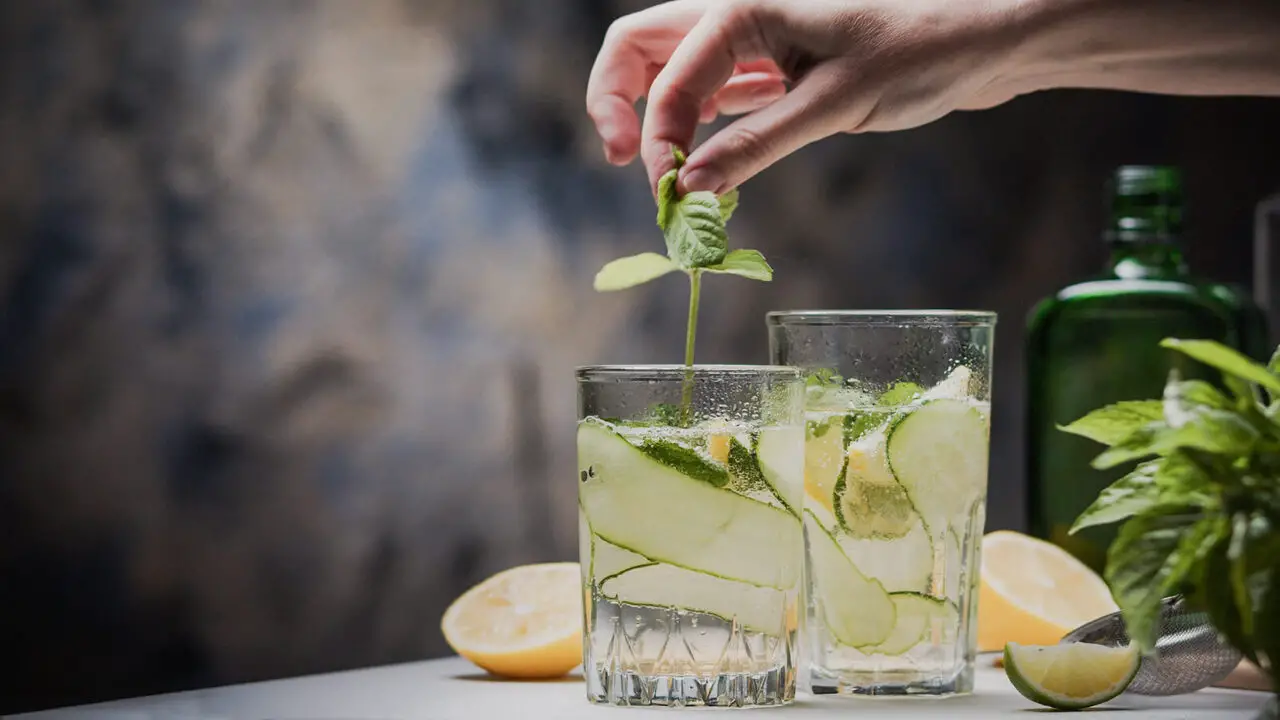
Add fresh basil leaves to caprese salads for a burst of flavor. Enhance your cocktails by making a basil-infused simple syrup. Give your smoothies or juices a herbal twist by blending in basil leaves. Sprinkle chopped basil over pizza or pasta dishes before serving to add a touch of freshness.
You can also use basil leaves as a garnish for soups, stews, and main dishes, adding flavor and visual appeal. These creative ways of using basil in cooking and cocktails will elevate your dishes and drinks to a new level. So, experiment with this versatile herb and enjoy the unique fragrance and taste it brings to your culinary creations.
Tips For Successful Basil Gardening And Troubleshooting Common Issues
When growing and using different basil varieties, a few tips can help ensure success in your garden. Following these tips, you can enjoy a bountiful harvest of basil and use its various varieties in your culinary creations. Here are some key points to keep in mind:
- Choose The Right Location: Basil thrives in warm weather, so select a sunny spot in your garden with well-draining soil.
- Start From Seeds Or Seedlings: Basil can be grown from seeds or purchased as small plants. If starting from seeds, sow them indoors 6-8 weeks before the last frost date.
- Provide Adequate Water: Basil prefers moist but not soggy soil. Water regularly, especially during dry spells, and avoid overhead watering to prevent leaf diseases.
- Harvest Regularly: Regular harvesting encourages bushier growth and prevents the plant from going to seed too quickly. Pinch off leaves just above a set of leaves to promote new growth.
- Troubleshooting Common Issues: Some common issues with basil include yellowing leaves, wilting, and pests like aphids or spider mites. To address these problems, ensure proper watering and adequate air circulation, and use organic pest control methods if necessary.
Conclusion
Growing and using different basil varieties can add flavor to your dishes and drinks. Whether you’re a gardening enthusiast or a culinary explorer, basil offers a world of possibilities. From the classic Genovese basil to the zesty Thai basil, each variety brings its own unique taste and aroma to your recipes.
To ensure successful basil gardening, it’s important to understand the growing requirements, such as proper watering, fertilizing, and pruning techniques. Harvesting basil leaves at the right time ensures optimum flavor and freshness. You can also explore various preservation methods like drying, freezing, and making basil-infused oils to enjoy basil’s goodness year-round.
Get creative in the kitchen by incorporating basil into your cooking and cocktails. From pesto sauces to refreshing basil-infused drinks, there are endless ways to elevate your culinary creations with this versatile herb. We hope you understand how to grow and use different basil varieties.
Frequently Asked Questions
1.Can I Plant Different Varieties Of Basil Together?
Ans: Yes, it is possible to plant different varieties of basil together. However, it is important to consider their growth rates and spacing requirements. Planting different varieties together can create a diverse and visually appealing herb garden. Remember the possibility of cross-pollination if you save seeds for future planting.
2.What Is The Best Basil For Eating?
Ans: For eating, the best basil variety is sweet basil. However, other varieties like Genovese, Thai, and Lemon basil offer distinct flavors that can enhance your dishes. Ultimately, it depends on personal preference and the specific dish being prepared. Experiment with different basil varieties to find your favorite for eating.
3.Are All Kinds Of Basil Edible?
Ans: While most basil varieties are edible, their flavors may differ. Sweet basil, Thai basil, and Genovese basil are commonly used in culinary applications. However, there are non-edible varieties like ornamental or medicinal basil. Always verify the edibility of a specific variety before consumption.
4.What Are Different Types Of Basil Good For?
Ans: Sweet basil is perfect for making pesto and adding to pasta dishes. Lemon basil adds a refreshing twist to seafood, salads, and Asian cuisine. Thai basil is commonly used in Thai and Vietnamese dishes. Holy basil has medicinal properties and is often used in herbal remedies.
5.What Are The Varieties Of Basil?
Ans: Varieties of basil include sweet basil, Thai basil, lemon basil, and holy basil. Sweet basil is commonly used in cooking with a mild flavor. Thai basil has a licorice-like taste, lemon basil is citrusy, and holy basil has medicinal properties.

